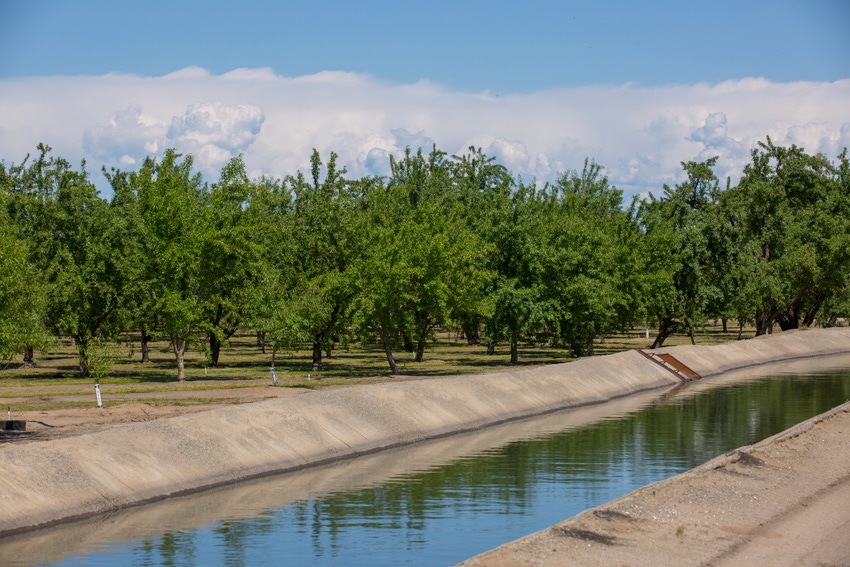
Now may be the time to bust out the shovel, says Almond Board of California Senior Manager of Irrigation and Water Efficiency Spencer Cooper. It’s important, he says, to check the soil moisture profile in your orchard before making the decision to start irrigation.
With continued dry conditions in California’s Central Valley, almond growers are thinking they may need to irrigate, Cooper says — but they should look at moisture levels before turning on the pump.
He suggests growers and farm managers auger down a couple feet (18-24 inches) at several orchard sites to assess the situation, then think through their plan for the year. If the soil moisture profile isn’t full, he says, it might be too late to try and completely fill it.
Decisions to initiate irrigation are largely site specific, Cooper says, depending on soil texture and rainfall. But trees aren’t using much water at this time — maybe half an inch per week, depending on location.
Almond growers in the South Valley generally do irrigate when fall and winter rainfall is inadequate and leaching is required, he notes. If growers feel they need to irrigate early in the season, he suggests to first check your soil profile. And if you have a pressure chamber, check the stem water potential to make sure you’re using all your tools to make irrigation decisions, rather than a pre-determined schedule or a gut feeling.
Trying to refill the soil profile at this time of year could create saturated soils and anaerobic conditions that are detrimental to tree health, Cooper says. If late winter storms do finally arrive, or there are frost events that require applied water for protection, there may be no room for that water in the soil profile, leading to standing water or water moving past the root zone.
He recommends relying on a pressure chamber when trees leaf out to determine stress levels and the appropriate irrigation timing. There is a step-by-step guide for using a pressure chamber available to growers on the UCANR website, www.anrcatalog.ucanr.edu/pdf/8503.pdf
Almond trees begin to use more water when leaves develop and shoot growth begins, Cooper notes. Longer days and increasingly warmer temperatures drive water use to a peak in mid-season. University research shows that a mature orchard in the southern Sacramento Valley can use 41 inches to 44 inches of water in an average year. Trees in the southern San Joaquin Valley can use 50 inches to 54 inches, depending on soil type.
Factors that determine root zone available water are root zone depth, soil water-holding capacity, and an estimate of the effective rainfall. The University of California Drought Management website shows the water-holding capacity (inches of water per foot of soil) for different soil textures. For example, a sandy loam soil with a 4 foot root zone, at 1.5 inches per foot x 4 feet = 6 inches available water capacity.
Estimation of effective rainfall through the winter and spring can be a key input in determining when to begin your irrigation season, Cooper says. He recommends referring to the Almond Irrigation Improvement Continuum to better understand how to calculate effective rainfall Almonds.com/Irrigation.
When determining how much water to apply, it is recommended to compare crop water use (ETc), stored soil moisture, and effective rainfall in the spring to enable the efficient use of both water and energy.
At this time of year, Cooper says, it’s essential to think through irrigation decisions, since there are many variables that can impact when and how much to irrigate. He encourages growers to take advantage of all the available in-person and online resources offered through the Almond Board of California and local farm advisors.
About the Author(s)
You May Also Like




